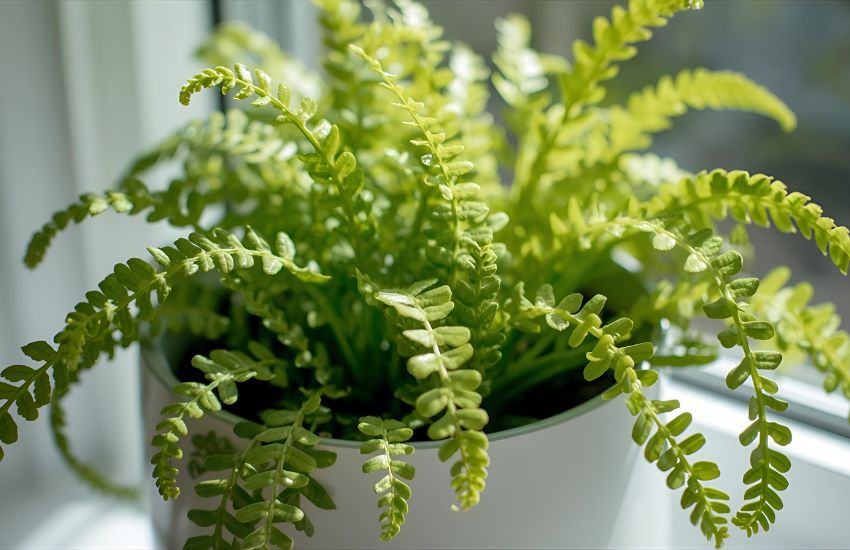Looking to bring softness and serenity into your indoor garden? If you’re searching for a low-maintenance houseplant with delicate, rounded leaves that thrive in cozy, shaded corners, the pellaea rotundifolia—commonly known as the Button Fern—might be your ideal match. This compact fern, native to New Zealand, offers dense green foliage that adds calm and charm to any indoor setting without overwhelming your space.
The Button Fern plant is a charming fern houseplant perfect for creating a peaceful indoor garden. It thrives in bright, indirect light and high humidity. Keep the soil evenly moist but not waterlogged, and avoid direct sun. With proper button fern care, this compact, low-maintenance plant adds lush greenery and calm to your home environment.
In this guide, you’ll learn how to care for pellaea rotundifolia step by step—from selecting the right soil and potting mix to meeting the humidity needs of this genus. Discover how to create the ideal indoor garden environment where your Button Fern can thrive peacefully.
Propagate, Repot, and Protect Your Button Fern Plant by Garden Zone Guide

Propagation: Multiply Your Evergreen Fern with Care
Button fern care starts with understanding how to propagate it properly. As a compact evergreen fern, it propagates best through division rather than from spores. Begin the process by gently removing the plant from its pot. Using a sharp knife, divide the root ball into sections, ensuring each has healthy roots and several fronds. This method is best done during spring or early summer when the plant is actively growing. Once divided, plant each section in fresh potting mix—preferably acidic, well-drained, and rich in perlite for airflow.
Each new plant should be placed in medium to bright indirect light, away from harsh direct sunlight, which may cause yellow or browning tips on the delicate leaflets. A windowsill with natural light filtered through a sheer curtain is ideal.
Repotting: Support Growth for Mature Plants
Repotting is essential for healthy, mature plants. When the top of the soil becomes compacted or roots begin circling the container, it’s time to size up. Choose a slightly larger pot with proper drainage holes. Gently loosen the root ball, remove old soil, and repot using fresh potting mix tailored for types of ferns. Keep the soil evenly moist, but not soggy, to prevent root rot.
During repotting, ensure the plant is not placed too deep—keep the base of the fronds at soil level. Position your houseplant in a location offering part shade or bright indirect light to encourage healthy frond growth that may arch beautifully over time.
Protection: Shield Your Fern from Common Problems
To protect your button fern indoors, maintain at least 50 percent humidity—a level the plant is tolerant of but thrives in. Native to New Zealand and Australia, this fern prefers temperate indoor climates that mirror USDA growing zones 9 and similar conditions. Combat dry air with a humidifier, pebble tray, or regular misting.
Inspect regularly for pest issues such as spider mites or scale. If found, isolate the plant and treat with neem oil or insecticidal soap. Avoid underwatering, which leads to dry, crisp leaves, and use a balanced houseplant fertilizer monthly during the growing season to keep foliage lush.
Conclusion
In conclusion, caring for your button fern requires a thoughtful balance of light, moisture, and temperature. This petite plant, with its arching fronds and delicate pinna, thrives in bright light but away from direct sun or cold drafts. To encourage new growth, keep the soil slightly moist but never waterlogged, as overwatering can quickly harm the roots. Always allow excess moisture to drain freely and refresh your potting mix with fresh soil and coir when needed.
Use an all-purpose fertilizer at half strength during active growth periods to nourish your fern without overwhelming it. If your plant starts turning dark red with age, it may signal a need for better care or a change in location—consider a north-facing window to offer consistent, indirect light. Monitor for dry tips or browning, especially if the environment becomes too drier than ideal. When your fern reaches about 12–18 inches tall, it may be time to repot, giving it a healthier root environment.
Don’t let your fern’s beauty fade—refresh, repot, and revive! Stay one step ahead in plant parenting—explore more expert tips and product picks in our full Button Fern Care Guide today.
Frequently Asked Questions (Button Fern Plant Care Guide: Fern Houseplant for a Peaceful Indoor Garden)
How to care for a button fern indoors?
To care for a button fern indoors, place it in bright, indirect light and keep the soil consistently moist but not soggy. Maintain high humidity by misting regularly or using a humidifier. Keep the temperature between 60–75°F. Avoid direct sunlight and cold drafts. Fertilize monthly during the growing season with a balanced, diluted houseplant fertilizer.
Do button ferns like sun or shade?
Button ferns prefer shade or indirect light rather than direct sunlight. They thrive in low to medium light conditions, making them excellent indoor plants. Direct sun can scorch their delicate fronds, so it’s best to place them in a bright room away from windows or in dappled shade where they receive gentle, filtered light.
Does fern like shade or sun?
Ferns generally prefer shade or indirect light rather than direct sun. Most fern species thrive in low to medium light conditions, similar to their natural forest habitats under tree canopies. Direct sunlight can scorch their delicate fronds, while too little light may slow their growth. Bright, filtered light or partial shade is usually ideal for healthy ferns.
Where to put button fern?
Place a button fern in a spot with bright, indirect light, such as near a north or east-facing window. Avoid direct sunlight, which can scorch its delicate leaves. It thrives in warm, humid areas like bathrooms or kitchens. Ensure consistent moisture and good airflow, keeping it away from heaters or air conditioners that dry out the air.
